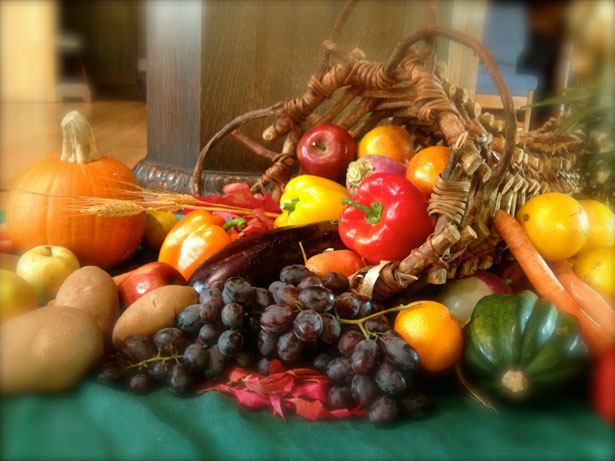Arts and Entertainment Editor
 |
| A festive cornucopia decorates the table. |
About
four hundred years ago, the King of England wouldn’t allow his people to
worship God in their own way and he demanded that everyone go to the same type
of church and worship the same way. In the year 1620, the Pilgrims landed in
Plymouth. They landed in the winter time and struggled to stay alive during the
long and cold months. Luckily, they had some assistance and instruction from
the Natives and. The Pilgrims learned how to fish and hunt as well as gather and
harvest, living off the land. During the
first year, the Pilgrims had a particularly good harvest; they decided that they
should have a feast to celebrate their good fortune. They invited their Native
American allies. Their three-day feast became the “first Thanksgiving.” This first Thanksgiving was organized by the
pilgrim leader, Governor William Bradford.
It was held in 1621.
Abraham
Lincoln declared Thanksgiving a national holiday in 1863. In 1939, President
Roosevelt declared that Thanksgiving would be on the fourth week of November.
He declared this in an attempt to spur economic growth and extend the Christmas
shopping season.
Often
times when people think of Thanksgiving, they think of the food. The first Thanksgiving
was a little different from our traditions these days. Lobster, rabbit,
chicken, fish, squash, beans, chestnuts, hickory nuts, onions, leeks, dried
fruits, maple syrup, honey, radishes, cabbage, carrots, eggs, and goat cheese
are thought to have made up the first Thanksgiving feast. Among our great Thanksgiving foods, turkey is
the one that seems to come to mind. In the U.S., about 280 million turkeys are
sold for Thanksgiving celebrations. Although, out of the fifty students polled,
twenty-four percent of Apex High School students said that turkey was their
favorite Thanksgiving food. Thirty percent of students from the same poll said
stuffing is their favorite Thanksgiving food. The other forty-six percent had
other favorites including sweet potato casserole, mashed potatoes, and pumpkin
pie.
Along
with the food, people often associate Thanksgiving with family. The families would sit around and feast and
spend time together, grateful that they had each other and thankful that they
had survived thus far. This seems like a dwindling tradition after asking the
students; only thirty percent said that they would be seeing their extended
family this year. Seventy percent of the students said that they would be
staying home. Is the cost of traveling too high or is the tradition of family
time a light slowly losing its flame?
Should
we focus Thanksgiving back on the basis of which it was created? Should we
attempt to keep the traditions alive? Granted, most of us are not even aware if
local farmers have a good harvest or not. Regardless of the harvest,
Thanksgiving is a holiday with meaning. It represents pride in what we do,
asking others for help and being thankful for everything that you have. So take
a moment next week, take a pause before you stuff your face with the meal
before you, and think of something that you are thankful for.